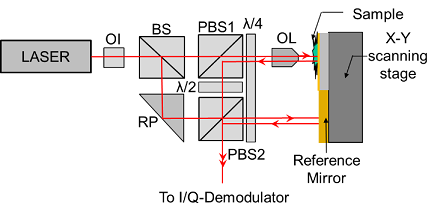
Kyuman Cho
Sogang University, South Korea
Title: A high resolution, multi-purpose scanning I/Q-interferometer scheme for material diagnostics
Biography
Biography: Kyuman Cho
Abstract
An I/Q-interferometer (IQI) scheme is ideal for both macro and micro-resolution diagnostics of various materials and devices, because it can measure the amplitude and phase change induced on the probe beam (PB) by the linear or nonlinear interaction with the sample under test. We recently proposed the new IQI scheme in which the PB and the reference beam (RB) in the interferometer are geometrically balanced as shown in the image. This arrangement is particularly advantageous in the application of the scanning microscopy because the IQI is not susceptible to any noise caused by lateral and transverse motions of the stage during the scanning. Various applications of the scanning IQI on the material diagnostics have been studied. The interferometer can provide the map of the local variations of the complex reflectance of the surface if the sample is reflective while the map of the local variations of the complex refractive indices can be obtained if the sample is transparent. In the latter case, the sample is mounted on a mirror which reflects the PB back into the interferometer. In the case of reflection measurements, images representing variations of the local topography and material inhomogeneity of the surface under test can be obtained by mapping point-to-point changes of the phase and amplitude values of the PB during the scanning. In the case of transmission measurements, the analysis may be more complicated, but, in principle, the amplitude and phase of the PB are determined by the absorption coefficient and optical thickness of the sample under test. In this presentation, details about the scanning IQI and its applications will be discussed.



